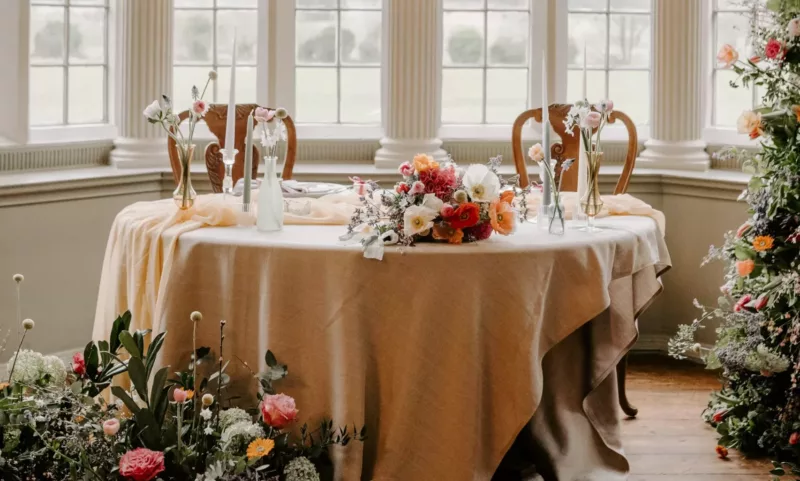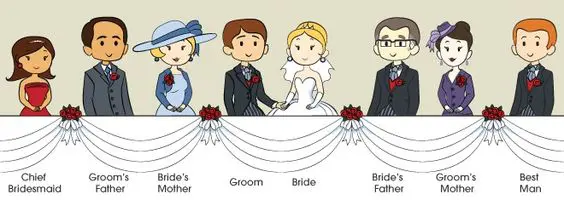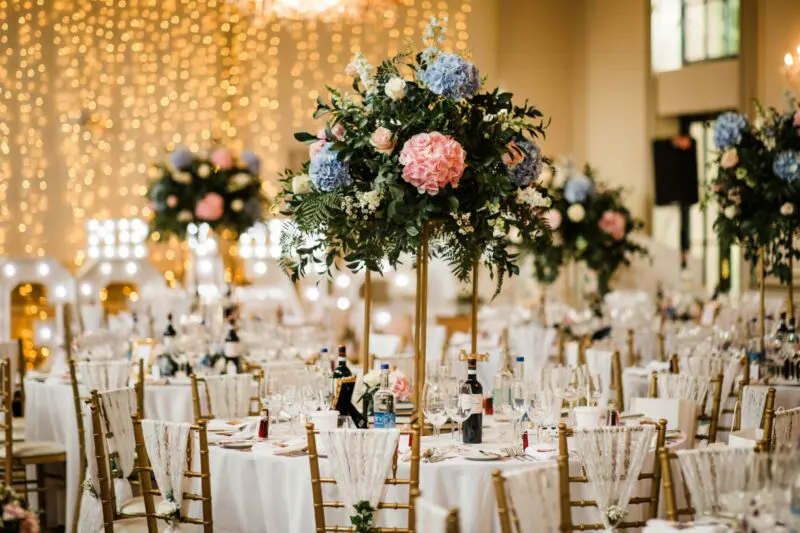— How to create a table plan for a wedding —
One of the biggest jobs on your wedding planning list- and one of the most stressful- is creating a wedding table plan. Whether it’s chasing up the late RSVPs, dealing with cancellations, trying to separate feuding branches of the family or dealing with complicated family politics, it all has the potential to be an enormous headache!
Don’t worry, here are our top 6 tips to help you create the perfect wedding table plan.
Get those RSVPs in early
You may have already sent out ‘save the date’ cards, but you still need to give people plenty of notice of your wedding plans. Send out your invitations around 6 months ahead if you can, with a ‘reply by’ date of no less than 6 weeks before the wedding day. This gives you time to chase the missing replies if you need to. You’ll also need to know any special dietary needs, so make sure these are marked on each RSVP to save you chasing later.
Your caterer will need final numbers around 2 weeks ahead of the day so use this as a firm deadline- no reply, no seat!

Start with yourself ( after all, you are the most important people!)
Whilst a long top table is traditional, there are multiple options. You might choose a round table for the wedding party instead, which avoids the hierarchy of a long table. Or you might choose a sweetheart table just for the two of you, with the wedding party at a separate top table. Once you’ve decided this, you can move on to arranging the seating for the wedding party.
The wedding party
The traditional order for the wedding party at a top table* is as follows:
image courtesy @toptableplanner on Pinterest
*in the UK- US table plans are slightly different
However, if either one of you comes from a blended family this can make this more tricky. Not only can there be multiple parents and step parents to consider, you might also be concerned if relations aren’t cordial between them. In this case, swapping the single top table for two round tables can be a diplomatic solution.
Consider your tables
There are a couple of choices when it comes to tables for your wedding reception. Usually the choices come down to round tables or rectangular ones. Round tables are the traditional choice as they allow people to talk to one another easily- at a long rectangular table guests might only be able to speak to the people either side. However long rectangular tables do mean you can seat more people in the same space.
When it comes to allocating tables, bear in mind access- guests with mobility issues might be best somewhere that has easy access. Younger guests in a high chair will need to be placed away from any high traffic areas where staff may be walking with hot dishes. Anyone hard of hearing might need to be close to the top table to hear speeches (if you are having any).
Group your guest list
Most couples will have guests they are inviting that come from different groups- colleagues, old school friends, family, the rugby club, and so on. Organise the guests into which group they belong to so that each person can be seated with someone they know or if not, at least someone they may have something in common with. That way everyone can enjoy socialising.
The ‘singles’ table
Some couples choose to have a ‘singles’ table for their guests who are attending alone. Not everyone will find this a fun option- you will know whether your friends will appreciate the thought or not! If you do go for a singles table, make sure it’s not in the corner of the room- it might feel like they are being relegated.
The ‘children’s’ table
Depending on the ages of any children you may want to arrange a separate table for them. This can work well, if it means their meals can be served separately, and there are no fancy glasses and other potential dangers to be negotiated. However, make sure the children’s parents aren’t too far away- they will still need to supervise!
Ask for help
You’ll probably find family members and friends would like to help with the wedding planning, and this is one area where they can be really helpful. They are likely to know family dynamics, and who can’t be seated next to whom. With many parents making financial contributions to the wedding cost, they may also want to make sure their friends have a good seat! That said, be careful you don’t ask for too many opinions- you will never be able to please everyone, however hard you try. Make sure they know you have the final say!





